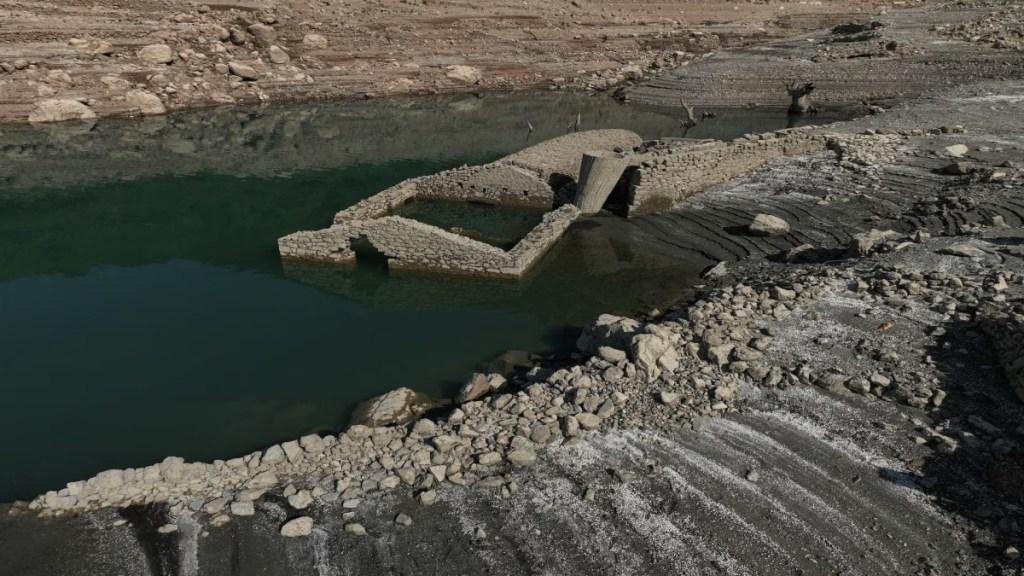Amid a drought in Greece, the sunken village of Kallio in Greece has reappeared after 45 years. The village has emerged after the Lake of Mornos dried up in central Greece amid a scorching summer and little rain. The lake was intentionally filled with water in 1980 to create a reservoir that would fulfill the water needs of Greek Capital, Athens. The arid Mediterranean climate of Greece has made the lake vulnerable to the effects of Global warming, exacerbating summer wildfires that have also reached the outskirts of Athens.
According to the Scientist, the extreme weather conditions related to climate change is now driving the decline of the lake. Cracked soil in long stretches can be seen around the village of Kallio and sea shells on the dried part of the lake, which was flooded in the 1980 some 200 km away from the capital.
Climate change effects on Village of Kalio, Greece
The lake’s surface area has shrunken from 16.8 square km in August 2022 to just 12 square Km this year as per the satellite images of National Observatory of Greece. Konstantinos Gerodimos a 90 year old and a former resident of the first village of Kallio said,” I use to see it full and say it was a beach. Now all you see is dryness.” His 77 year old wife adds,”If it continues like this, the entire village will appear, all the way to the bottom, where the church and our home was.”
According to the environment ministry of Greece, water reserves and other reservoirs supplying water to Attica, a region of around 4 million acres that includes Athens saw a drop to 700 million cubic meters in August from 1.2 billion cubic meters in 2022.

